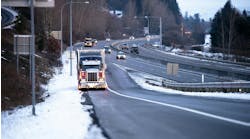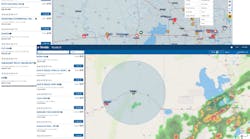Manager: Ken Marko, senior manager of national fleet sustainability
Company: Frito-Lay North America
Operation: 21,000 Class 3-8 vehicles providing food and beverage distribution service
PROBLEM:
Integrating alternative-fuel vehicles into any fleet operation poses many challenges, not the least of which is figuring out the particulars of their maintenance needs.
Frito-Lay North America knows that all too well, as it has integrated nearly 300 all-electric delivery trucks and 463 Class 8 tractors powered by compressed natural gas (CNG) into its fleet.
Ken Marko notes that the evolution of the company’s CNG tractor technology highlights how maintenance needs for such alternative power systems evolved over time. Back in 2012-13, for example, Frito-Lay purchased Freightliner tractors equipped with Cummins ISL G 8.9L CNG-fired engines but by 2014 started spec’ing its CNG tractors with the Cummins ISX 12G 11.9L engine to get more horsepower.
It was difficult to keep Frito-Lay’s 200 or so technicians, who work across 27 company-operated shops in the U.S., up to date on the maintenance differences between those two natural gas-fired engines and how they differ from traditional diesel-powered units. The company needed a way to share information.
SOLUTION:
The best way to do this, Marko explains, was to have regular technician conference calls to share “best practices” among all of Frito-Lay’s far-flung shops.
“I host a conference call with our top technicians every two weeks to go over problems and solutions concerning our natural gas trucks,” he says.
That call can cover everything from the mundane to the strange, Marko relates. For instance, one call dealt with tips on how to reinstall the covers on CNG fuel tanks following inspections, while another concerned an unexpected complication brought on by contaminated fuel.
Natural gas used to power trucks needs to be clean, i.e, free from oil or moisture, as those substances can damage both the engine and fuel system while also affecting range. A Frito-Lay driver discovered such contaminants can also lead to other problems.
“We had one case where the refueling hose froze to the truck due to contaminants,” Marko says. “The driver in that case had to pour hot coffee over the connection to get the hose free.”
Information gleaned from the conference calls helps improve the company’s natural gas fleet strategy. For example, Marko now uses what he calls the “Five Ps” checklist when reviewing CNG filling station capabilities: public access, proximity to the fleet’s home base, pricing of the natural gas, performance or flow rate of the natural gas refueling pumps, and pavement space that will allow enough room to easily maneuver tractor-trailers in and out of the facility.
“Sharing issues and ideas helps all of our locations using our CNG equipment operate more efficiently,” he says.



